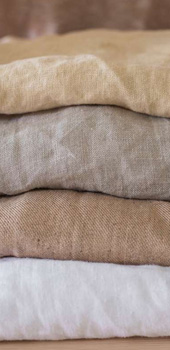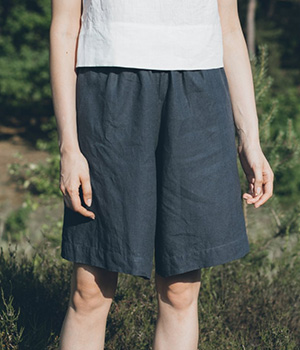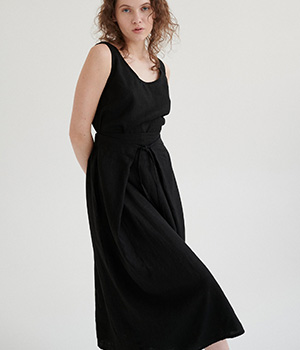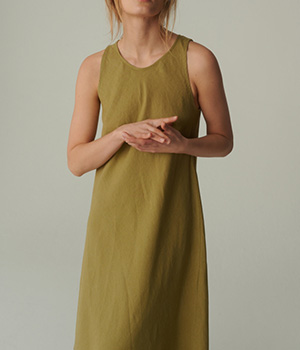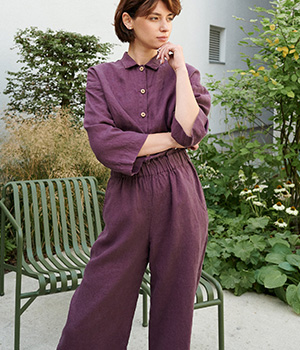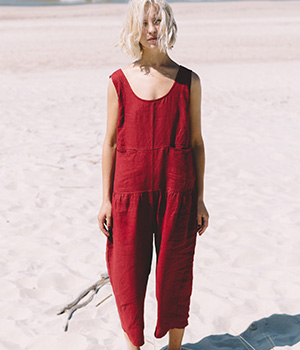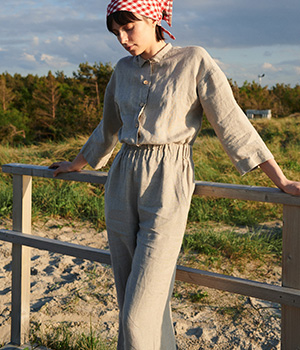Why Is Linen So Expensive?
Why Is Linen So Expensive? Understanding the Premium Value Behind This Timeless Fabric
Linen has long been prized as one of the oldest and most luxurious natural fabrics. Appreciated for its exceptional quality, timeless elegance, and environmental sustainability, linen frequently commands premium pricing. However, for many brands and consumers alike, the question persists—why exactly is linen so expensive?
In this comprehensive guide, we’ll unpack the key reasons behind linen's premium price tag, covering everything from its intricate production process to its unparalleled eco-friendliness and enduring quality. As a leading linen clothing manufacturer with over two decades of experience, Linenwind understands precisely what contributes to linen’s distinctive appeal in today's fashion market.
1. Complex and Labor-Intensive Production Process
Linen production starts with flax plants, which require highly specific growing conditions. The cultivation of flax demands a temperate, humid climate and fertile soils, conditions primarily found in select regions such as Western Europe, notably Belgium, France, and Ireland.
Once harvested, flax undergoes several meticulous processes:
Harvesting and Retting: Flax plants are uprooted rather than cut, ensuring maximum fiber length. Retting, the next step, involves a natural decomposition process to separate fibers from the woody core. This can take weeks, requiring precision and constant monitoring.
Breaking and Scutching: Mechanical or manual processes then separate fibers from the plant’s woody stalk. It's delicate work, requiring skilled labor and careful handling to avoid damage.
Heckling: Fibers are combed to remove shorter strands and impurities. Only the longest fibers, which deliver higher quality and strength, are kept for premium linen products.
Such manual and detailed craftsmanship significantly contributes to the final cost of linen fabric.

2. Limited Geographical Cultivation Areas
Flax grows optimally only in certain limited geographic areas. Europe's "Flax Belt" — primarily Belgium, France, and Ireland — remains the leading producer of premium-quality flax due to ideal climatic conditions. This geographic exclusivity restricts linen production volumes, driving up its market value compared to widely cultivated fibers such as cotton or polyester.
3. Exceptional Quality and Durability
One key reason why linen justifies its higher cost is its exceptional durability. Linen fibers are notably stronger and more robust than cotton. Well-made linen garments can last decades, actually improving with age and repeated washing. This longevity offsets the higher initial purchase price, as consumers benefit from fewer replacements and reduced long-term costs.
At Linenwind, we partner closely with premium fashion brands in Europe and the US, ensuring our linen products exceed rigorous quality standards. This commitment is reflected in linen’s outstanding resistance to wear, tear, and deformation.


4. Environmental and Sustainability Credentials
Consumers increasingly seek sustainable and environmentally responsible textiles, and linen scores exceptionally high in these categories:
Low Resource Consumption: Flax cultivation consumes significantly less water and fewer pesticides compared to cotton production. It's inherently eco-friendly, reducing the overall environmental impact.
Biodegradable and Renewable: Linen is entirely biodegradable, returning to the earth naturally after use without harmful residues. Additionally, flax plants are renewable, requiring less acreage and energy compared to synthetic or even other natural fibers.
Carbon Footprint Reduction: Linen’s production and processing methods contribute significantly lower CO2 emissions, making it highly attractive to brands prioritizing sustainability in their product lines.
As fashion brands become more eco-conscious, they are increasingly willing to invest in premium sustainable fabrics like linen, further contributing to its premium pricing structure.


5. Natural Comfort and Versatility
Linen offers unparalleled comfort, particularly in warm climates. Its fibers naturally regulate temperature, absorbing moisture efficiently and drying quickly. This breathability makes linen highly desirable in fashion lines designed for warmer weather and active lifestyles, from casual wear to elegant summer dresses and shirts.
Moreover, linen's timeless aesthetic allows brands extensive versatility in styling, appealing to a wide range of consumers from minimalist fashion enthusiasts to sophisticated luxury seekers.


6. Small Batch Production and Artisan Craftsmanship
High-quality linen is often produced in small batches, reflecting meticulous attention to detail. This artisanal approach involves traditional weaving techniques, preserving craftsmanship and ensuring each linen piece maintains superior standards.
Such careful production cannot be scaled rapidly or cheaply, which naturally limits availability and increases pricing. Consumers and brands alike value this exclusivity, viewing linen garments as not merely clothing items but true investments.
7. Ethical Production and Fair Labor Practices
In response to global ethical consumption trends, premium linen manufacturers like Linenwind adhere to strict labor standards, including fair wages and ethical working conditions. Ethical production naturally incurs higher operational costs. Brands committed to sustainability and social responsibility readily absorb these expenses, aligning their values with consumer expectations of ethical manufacturing.


8. Growing Consumer Demand and Fashion Industry Trends
The global shift towards sustainability, ethical fashion, and minimalist aesthetics has significantly increased demand for linen. High-profile fashion designers and sustainable brands frequently feature linen collections, elevating its profile and desirability.
This trend-driven demand, combined with linen's limited supply, inevitably supports its premium price.


How Linenwind Delivers Premium Linen
At Linenwind, our 20 years of experience in linen garment manufacturing enables us to offer unmatched expertise to fashion brands looking to expand their product lines with high-quality, sustainable linen pieces. Our collaborations with leading fashion houses and dedication to ethical, sustainable manufacturing processes set us apart in the industry.
We consistently deliver products that represent the best linen has to offer—durability, timeless elegance, and superior sustainability.
Conclusion: Is Linen Worth the Price?
When considering linen's complex and meticulous production process, exceptional quality, and outstanding sustainability credentials, the reasons for its higher price become clear. Linen is not just an expensive fabric—it's a wise, long-term investment that reflects a growing global appreciation for sustainability, quality craftsmanship, and timeless fashion.
Fashion brands seeking to align with these consumer values will find linen a strategic addition to their collections, positioning their brand uniquely in an increasingly environmentally-conscious market.
About Linenwind:
Linenwind is dedicated to providing premium linen clothing manufacturing solutions for fashion brands worldwide. With two decades of proven expertise and international partnerships, we deliver excellence, sustainability, and style.




